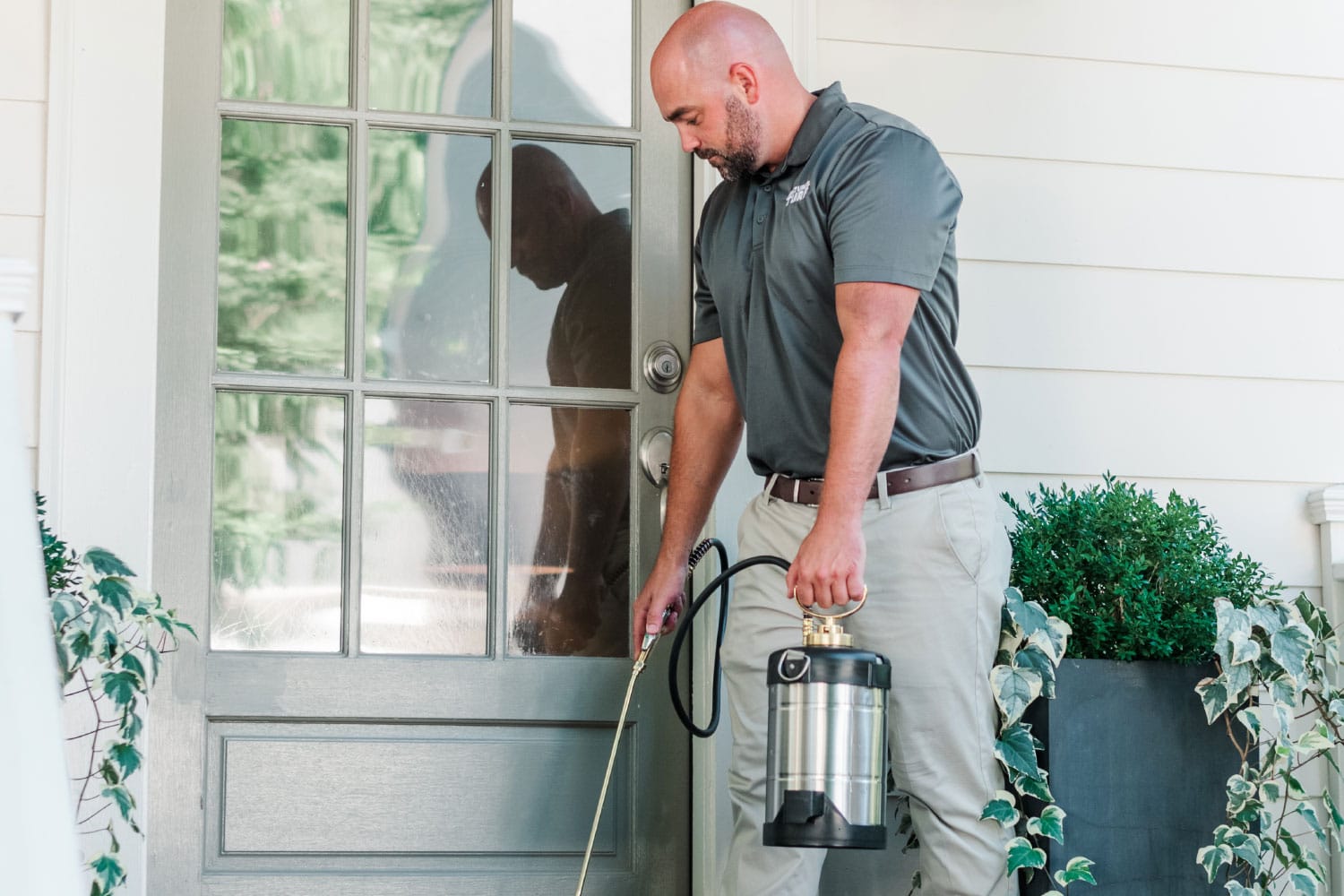If you’ve never heard of carpenter bees, you might be imagining a small, animated bee wearing a little carpenter’s belt. One encounter with them will eliminate that whimsical image from your brain immediately. Whether you’ve seen them, found the piles of dust they created, or encountered the holes they left in your property, your frustrations likely overpower fascination. What are carpenter bees, why are they drilling holes, and how do we get rid of them?
What Are Carpenter Bees?
Carpenter bees are closely related to bumble bees and bear an uncanny resemblance to them. Where bumble bees have fuzzy abdomens, carpenter bees are typically smooth. When they’re flying, it can be hard to differentiate carpenter bees from bumble bees unless you see them emerge from the holes they created.
Carpenter bees are members of the order hymenoptera, which includes wasps, bees, and ants. Unlike other species you may be familiar with in this order, carpenter bees aren’t social. Other bees and wasps have large nests, and ants make mounds, but carpenter bees are often solitary creatures, creating their own tunnels and chambers.
Like other species of hymenoptera, male carpenter bees are haploid (they have no father; their single set of chromosomes comes from their mother), and they’re incapable of stinging but are a bit territorial. They can’t hurt you, but they can make you uncomfortable with their presence and appearance. Female carpenter bees can sting, but you’re less likely to encounter them. Getting stung generally requires provocation.
Carpenter bees spend winters in their chambers, where they may keep provisions as they wait out warmer weather. Consistent with their hymenopteran tendencies, emergence in the spring leads to procreation and the need for a place to lay eggs. This is when they become an issue for people.
Why Do Carpenter Bees Make Holes?
Carpenter bees primarily create their signature holes as harborage and protection for eggs. Female carpenter bees will either reuse previously created chambers or excavate new ones after engaging with a male. Carpenter bees create tunnels in trees and in structures including fences, decks, sheds and even your home. These tunnels make the perfect protection from predators and allow them to develop with little need for the protective methods other bees use (such as swarms).
How Do We Get Rid of Carpenter Bees?
The best offense against carpenter bees is a good defense: take good care of your structures, and make sure that your wood is sealed. Those preventive measures are the primary methods of dissuading carpenter bees from choosing your property in which to create their safe-havens. Soft, unpainted, and worn materials make for an attractive place for establishment. The entrances to their tunnels will generally be on the bottom side of a sill, lip, soffit, or the railing and floorboards of a deck.
Maintain the paint on your home, keep your deck sealed/stained, and replace materials that aren’t suitable for use to discourage their interest in your structures. If you do find yourself with carpenter bees, spraying them with wasp spray is an effective way to get rid of them, but be warned that females are capable of stinging if provoked. Since they are hymenoptera, if you are allergic to other wasps or bees, you are allergic to carpenter bees.
Repair the holes created by the carpenter bees; this is important to stop the emergence of the eggs/larvae present in the chambers and will prevent the opportunistic use of existing tunnels by future carpenter bees. If you’ve had significant damage to any single piece of wood, we advise you to replace it. Not only has the damaged wood been proven an acceptable location for carpenter bees to drill, but excessive tunneling can compromise the structural integrity of the lumber.
If you have questions about carpenter bees, their communal cousins, or any other pests causing you pause, feel free to contact Nature’s Turf at 678-831-6343 or email us at info@naturesturf.com. We have a staff of pest professionals eager to make your acquaintance and help strategize ways to rid your property of pesky problems.








